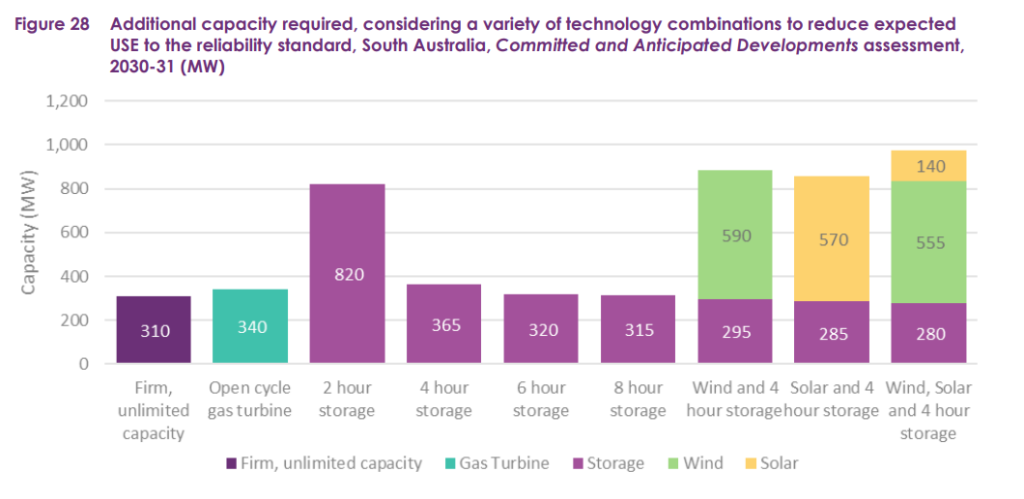
The Australian Energy Market Operator (AEMO) has predicted the National Electricity Market (NEM) will see a steady rise in renewable energy generation capacity, reaching 229TWh by 2035.
According to AEMO’s new 2025 Electricity Statement of Opportunities report, the steady rise in renewable energy generation and energy storage capacity will help displace the reliance on coal-fired power, making way for the technology to be phased out of the NEM.
Try Premium for just $1
- Full premium access for the first month at only $1
- Converts to an annual rate after 30 days unless cancelled
- Cancel anytime during the trial period
Premium Benefits
- Expert industry analysis and interviews
- Digital access to PV Tech Power journal
- Exclusive event discounts
Or get the full Premium subscription right away
Or continue reading this article for free
Indeed, the organisation’s latest forecasts show a 28% increase in operational electricity consumption, demand met by grid-scale generation, from 178TWh in 2024-25 to around 229TWh by 2034-35.
This forecast growth is predominantly driven by the rapid expansion of data centres, accelerating business electrification and the broader inclusion of prospective industrial energy users.
Solar PV penetration set to increase to 56%
AEMO’s report highlights significant growth in both rooftop and utility-scale solar installations across the NEM.
Currently, approximately 39% of houses and semi-detached dwellings in the NEM have installed PV systems. Under AEMO’s Step Change scenario, which sees an accelerated energy transition aligned with the country’s net zero goals, this penetration will increase to 56% by 2050.
This widespread adoption of rooftop PV is expected to substantially reduce grid operational consumption. According to AEMO’s projections, rooftop solar will decrease operational consumption by 49TWh by 2034-35, expanding further to 103TWh by 2054-55.
Notably, while the projected number of installed systems has increased compared to previous forecasts, driven by higher energy price expectations resulting in reduced investment payback periods, the average system sizes in this 2025 ESOO are smaller than previously forecast.
This adjustment has resulted in somewhat lower overall capacity than anticipated in earlier reports, though the trend toward distributed generation remains strong.
Energy storage deployment to tackle grid reliability gaps
Energy storage continues to emerge as a critical component of Australia’s energy transition strategy. AEMO’s report reveals various storage durations and their effectiveness in meeting reliability standards, providing crucial insights for developers and policymakers.
Indeed, several different technology combinations in South Australia could be sought to help reduce expected unserved energy (USE) and meet reliability standards by 2030-31.
For instance, AEMO states that 820MW of 2-hour storage would be required to reduce expected USE to meet the reliability standard. In contrast, less than half that capacity is needed if the storage has a duration of 4-hours or more – specifically, 365MW of 4-hour storage would suffice.
The report also demonstrates that longer-duration storage options could provide increasingly efficient solutions: 6-hour duration storage, for example, would require 320MW, while 8-hour storage would need approximately 315MW to achieve the same reliability outcomes.
According to AEMO, hybrid configurations show even greater efficiency gains. When wind is combined with 4-hour duration energy storage, the requirement drops to 295MW of storage co-located with 590MW of wind generation.
Similarly, solar PV combined with 4-hour storage would require 285MW of energy storage alongside 570MW of solar. The most efficient configuration examined involves a combination of wind, solar and 4-hour storage, requiring 280MW of storage, 555MW of wind and 140MW of solar.

The report reveals that longer duration storage, defined as 4-hour or more, is more effective at reducing reliability risks than shorter duration storage. This is because in 2030-31, expected USE in South Australia is forecast to exceed the reliability standard, with some shortfall events lasting more than four hours.
In such conditions, AEMO said 2-hour battery storage systems are typically exhausted early, providing no reliability benefits for later hours of the forecast USE event. By contrast, longer duration storage can sustain output over a larger portion or even across the full duration of these USE events.
It is also worth noting that AEMO’s report includes detailed performance data comparing different generation technologies.
This data reveals that battery energy storage systems demonstrate the highest reliability, with approximately 70% of the fleet experiencing unplanned outage rates of only 0-5%.






